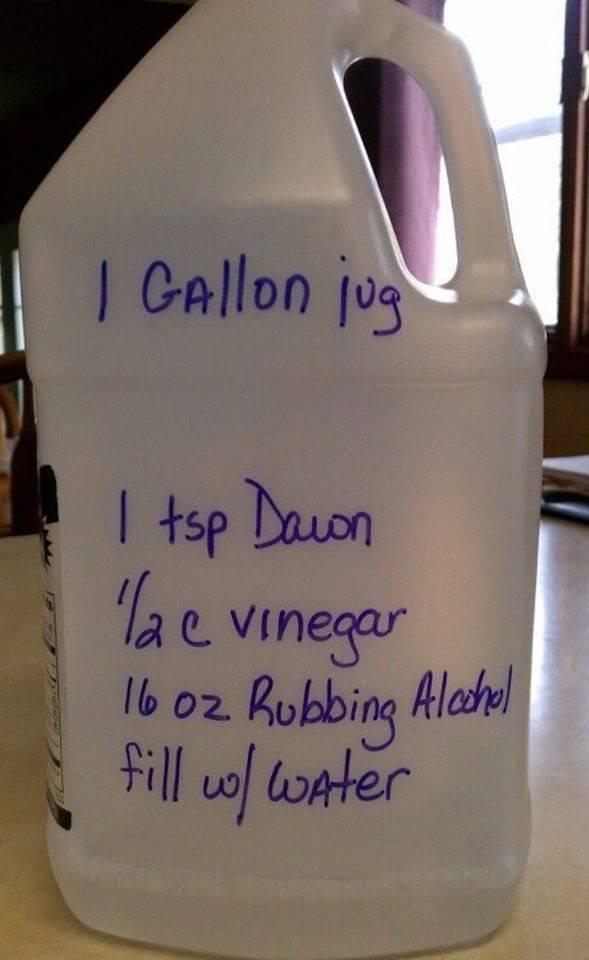Mold Remediation: A Natural Approach
Mold can indeed be a persistent and problematic issue in homes, and it’s essential to address it promptly and effectively. Here’s a summary of the steps for getting rid of mold naturally and some preventive measures:
Getting Rid of Mold Naturally:
- Identify Affected Areas: Locate areas in your home that are affected by mold. Remove and isolate any contaminated items, such as wood furniture.
- Wear Gloves: Protect your hands with nonporous gloves to prevent skin irritation during the cleaning process.
- Use White Vinegar: Fill a spray bottle with undiluted natural white vinegar, ensuring you have enough to cover the mold-affected surface. Spray the vinegar generously over the moldy area.
- Let it Sit: Allow the vinegar to sit on the surface for at least an hour. This will help kill the mold.
- Scrub with Warm Water: After the vinegar has had time to work, use a cleaning brush and warm water to scrub the area. Keep dipping the brush in water as you clean.
- Wipe Clean: Wipe the cleaned area with a clean towel and warm water. Ensure the area is adequately ventilated to aid in drying.
- Vinegar and Baking Soda: Optionally, you can mix white vinegar with baking soda in the same spray bottle to enhance the cleaning power. Do not mix vinegar with chlorine, as it can create toxic fumes.
Mold Removal Recipe:
Take a gallon jug and add:
- 1 tsp Dawn Dishwashing Liquid
- 1/2 cup vinegar
- 16 ounces Rubbing Alcohol
- Fill remainder of jug with water
Preventing Mold in the Home:
- Control Humidity: Keep your home dry by controlling humidity levels. Use dehumidifiers if necessary, especially in damp areas like basements.
- Ventilation: Properly ventilate your home, especially in areas like bathrooms and kitchens where moisture is common. Use exhaust fans and open windows when needed.
- Promptly Dry Wet Items: Don’t leave wet clothes or spills unattended. Dry wet items promptly to prevent mold growth.
- Address Standing Water: Quickly clean and dry any areas affected by spills, floods, or leaks. Mold can start growing within 24-48 hours in damp conditions.
By following these steps for removal and prevention, you can effectively manage and prevent mold issues in your home, which is crucial for maintaining both the cleanliness and health of your living space.
FAQs (Frequently Asked Questions)
1. Is white vinegar effective for removing mold?
Yes, white vinegar is a natural and effective solution for killing mold. Its acidic nature helps to break down mold spores and inhibit further growth. Plus, it’s safe to use and non-toxic.
2. Can I use bleach instead of vinegar to remove mold?
While bleach can effectively kill mold, it may not penetrate porous surfaces as effectively as vinegar. Additionally, bleach emits strong fumes and can be harmful if not used properly. White vinegar is a safer and more natural alternative.
3. How long does it take for vinegar to kill mold?
It typically takes at least an hour for vinegar to effectively kill mold on surfaces. However, for stubborn mold or heavily affected areas, you may need to leave the vinegar solution on for longer or repeat the cleaning process.
4. Can I use the mold removal recipe on all surfaces?
The mold removal recipe containing Dawn dishwashing liquid, vinegar, rubbing alcohol, and water is generally safe to use on most surfaces. However, it’s always a good idea to test it on a small, inconspicuous area first to ensure compatibility and avoid damage.
5. How often should I check for mold in my home?
It’s a good idea to check for mold regularly, especially in areas prone to moisture such as bathrooms, kitchens, basements, and attics. Conduct a visual inspection and address any signs of mold promptly to prevent further growth.
6. Can I prevent mold growth by simply cleaning with soap and water?
While cleaning with soap and water can help remove surface mold, it may not effectively kill mold spores or prevent future growth. Using natural mold-fighting solutions like vinegar and implementing preventive measures such as controlling humidity and proper ventilation are key to long-term mold prevention.
7. Is mold harmful to my health?
Inhaling or coming into contact with mold can potentially cause health issues, especially for individuals with allergies, asthma, or weakened immune systems. It’s essential to address mold growth promptly and take preventive measures to maintain a healthy indoor environment.
8. How do I know if mold removal is successful?
Successful mold removal is indicated by the absence of visible mold growth and any associated musty odors. Regular monitoring and maintenance of moisture levels can help ensure that mold does not return.
9. Can I use the mold removal recipe outdoors?
While the mold removal recipe can be effective outdoors, it may not be suitable for all outdoor surfaces. Additionally, environmental factors such as wind and rain may affect the effectiveness of the solution. Consider consulting a professional for outdoor mold remediation if needed.
10. What should I do if I discover extensive mold growth in my home?
If you discover extensive mold growth or are unsure about the extent of the problem, it’s best to consult a professional mold remediation specialist. They can assess the situation, provide expert advice, and safely remove the mold to ensure the health and safety of your home.

